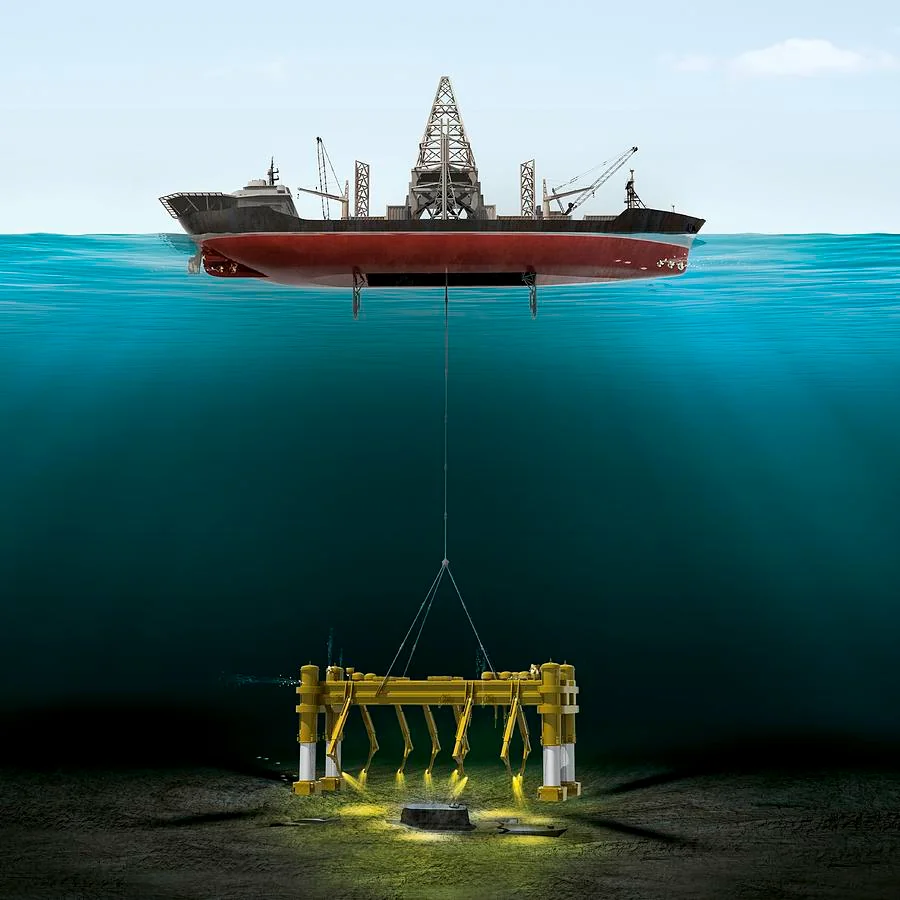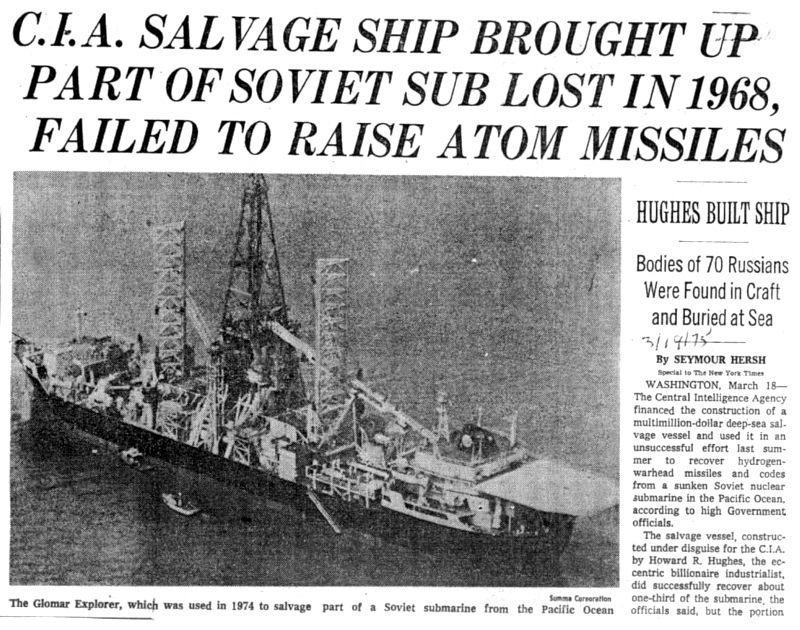Project Azorian, Hughes Glomar Explorer and Deep Sea Mining
Project Azorian is one of the more bizarre incidents in the history of Deep Sea Mining, in which the CIA and a billionaire industrialist collaborated under the guise of a Deep Sea Mining operation in order to recover a sunken Soviet submarine.
The Cold War saw many secretive operations were conducted by the USA and USSR, which came to light only after several decades. Of these, one such clandestine operation undertaken by the United States was 'Project Azorian'. Project Azorian sought to recover a sunken Soviet nuclear submarine intact from the seafloor, and it was one of the most expensive, secretive, and ambitious projects ever taken by the CIA during this period.
Project Azorian
In 1968, during the height of the cold war, the Soviet Union lost one of its submarine named K-129, a Golf II class submarine, in the Pacific Ocean.

The location of the sunken submarine was not known to the Soviets, but the US had located the submarine 1500 miles northwest of Hawaii at a depth of 16,500 feet. The K-129 was carrying nuclear ballistic missiles and the US wanted to recover it to study the technology and strategies of the Soviet Union. This lead to the creation of Project Azorian.
Planning and Execution
The CIA approached Howard Hughes, the billionaire industrialist, to construct a ship that could recover the sunken submarine from the ocean floor. In order to generate a plausible cover story for developing and building enormous offshore vessels and technology, they decided that the recovery mission would be disguised as a deep-sea mining expedition to mine manganese nodules from the ocean floor. Howard Hughes agreed to assist, and the cover story was made public in 1972. Ironically, the cover story was so convincing that it sparked further interest in deep-sea mining around the world.
A large, deepwater, heavy-lift vessel was needed in order to lift the K-129 from the seabed and secure it, whilst ensuring that spy satellites and overflying aircraft were unable to see the submarine. Although this was nominally designed and built by the Hughes Corporation, construction of the vessel was carried out under the supervision of the CIA, and it was named 'Hughes Glomar Explorer' (HGE).

The HGE was equipped with advanced technology, including a claw-like capture vehicle named 'Clementine' to grab the submarine from the ocean floor. The whole operation was conducted with utmost secrecy, and even the crew on the ship did not know the real purpose of the mission. Only a handful of people, including Howard Hughes, were aware of the actual objective.
Outcome
The HGE set sail in the summer of 1974 and reached the recovery site. The operation was partially successful as the HGE was able to recover a portion of the K-129, including two nuclear torpedoes, some cryptological documents, and the bodies of six Soviet sailors. However, the section of the submarine carrying the missile control room and nuclear ballistic missiles broke off during the recovery and fell back to the ocean floor. The recovered items were transported back to the US for analysis.

Aftermath
The US government went to great lengths to keep the operation a secret, but in 1975, news about the mission was leaked by the media. The Soviet Union demanded the return of the submarine, but the US never officially confirmed the operation. Instead, they returned the bodies of the six Soviet sailors with full military honors.
Hughes Glomar Explorer was initially mothballed afer Project Azorian, but was reactivated as a deep sea mining research vessel by Lockheed, and then spent 18 years as a deepwater drillship.